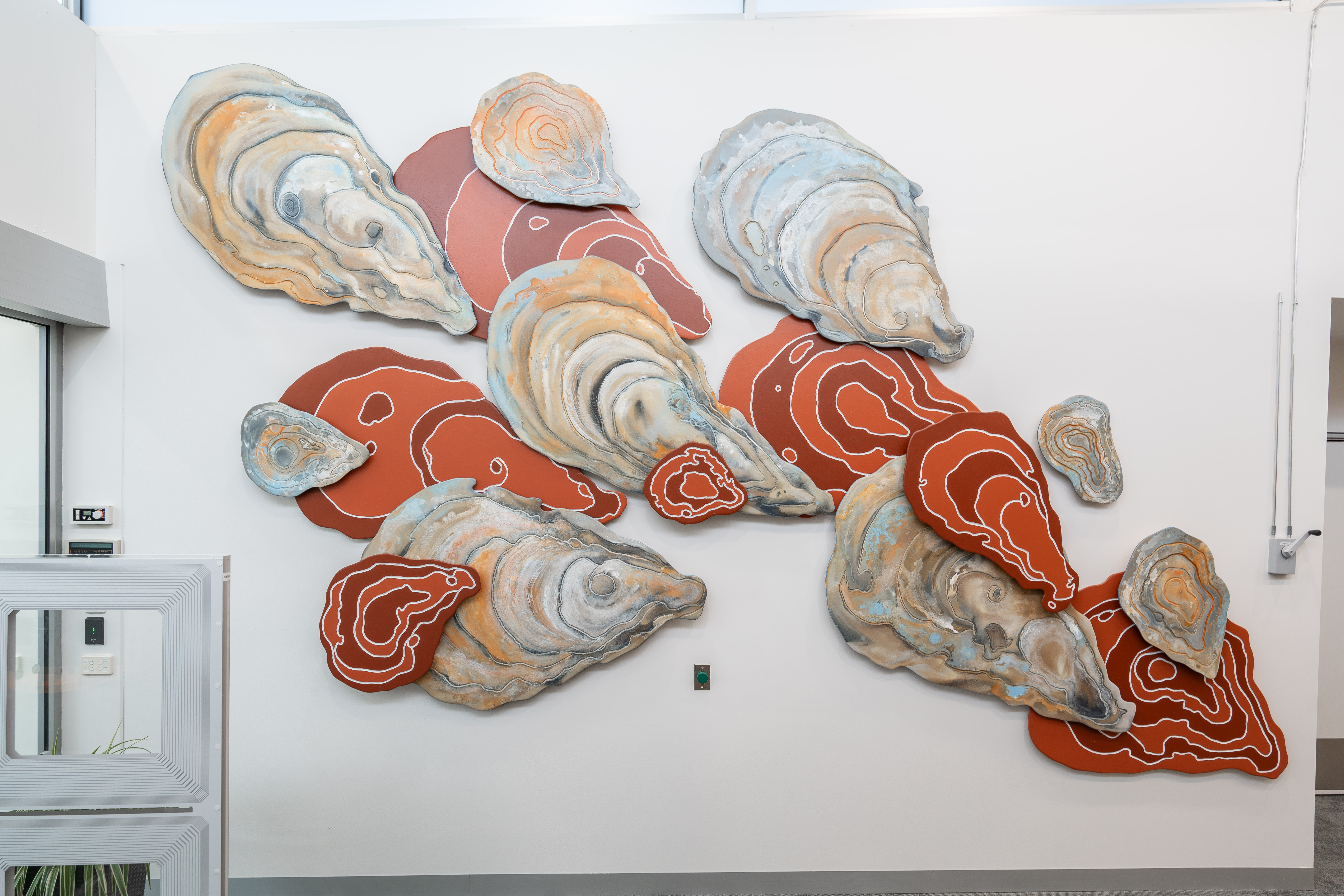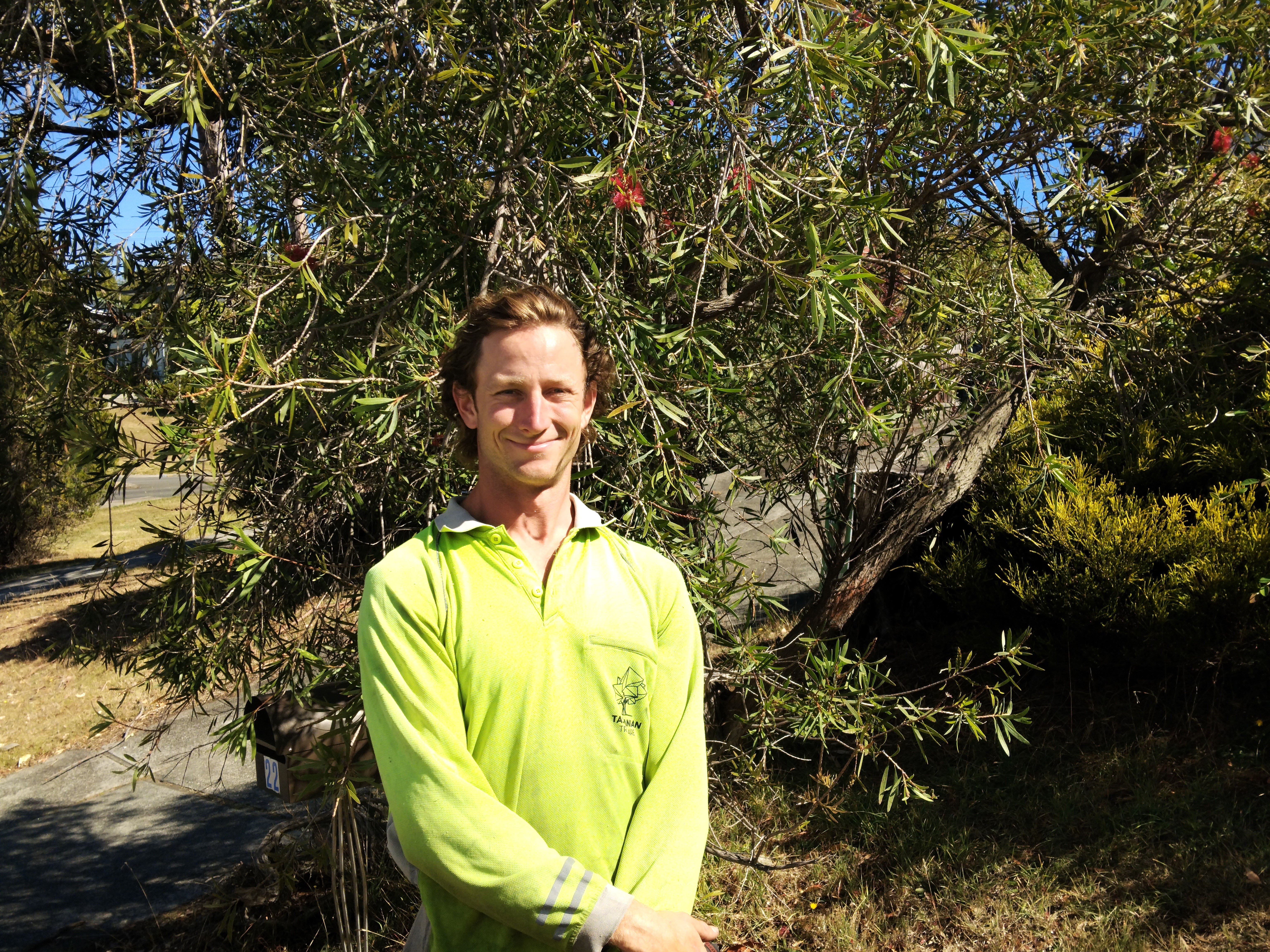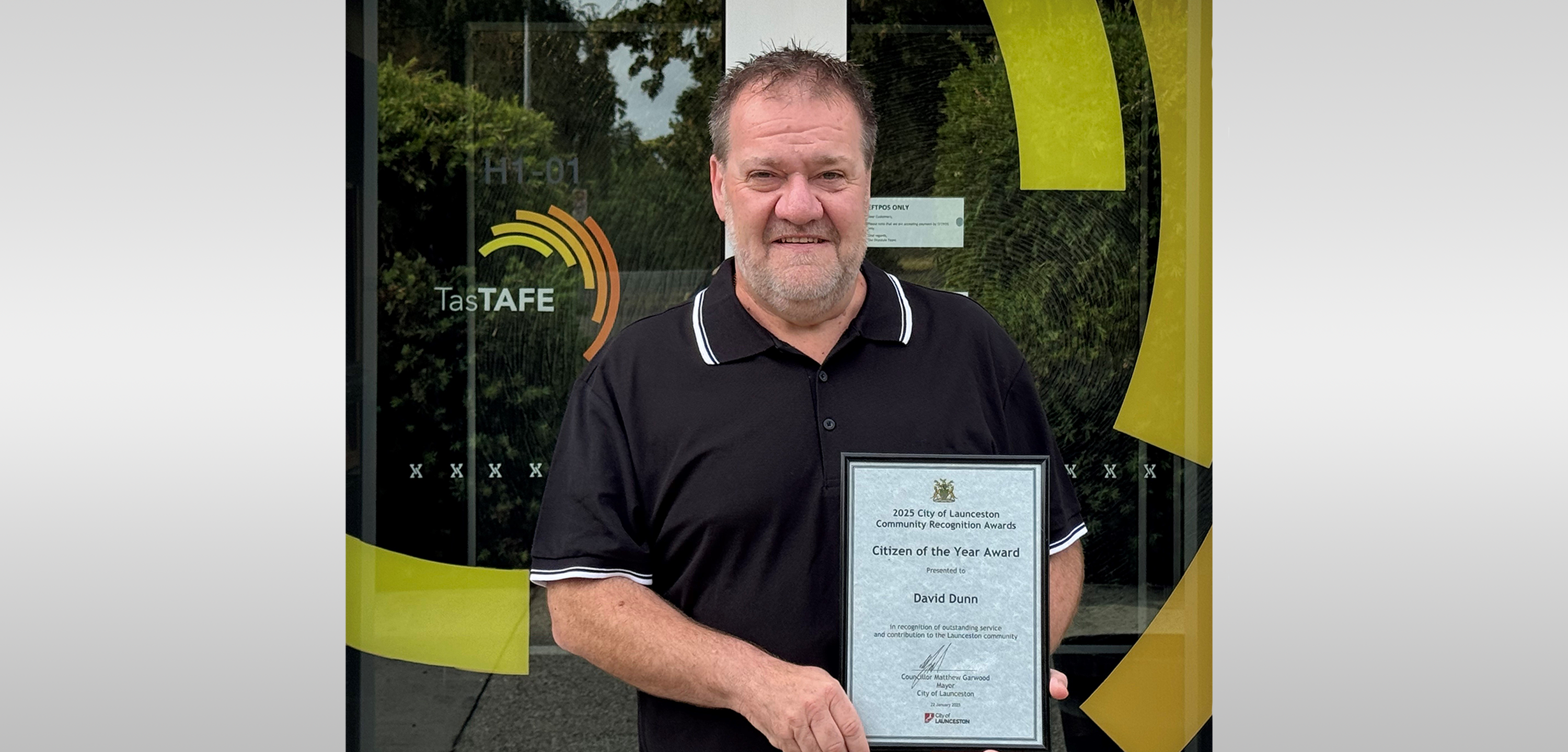Meaningful new artwork takes shape at taypani Clarence
Published on: 07 Nov 2024
Luke Emmerton and Jamin Kluss at taypani Clarence.
Have you been to the taypani learner hub at TasTAFE’s Clarence Campus in Warrane yet?
The first of 5 hubs to be built at TasTAFE campuses around the state, taypani Clarence is a supportive and welcoming space that serves as a one-stop shop for learner services and online resources.
Next to the entrance is a striking new artwork called taralangkana/oyster, by local creative Luke Emmerton and his friend and collaborator Jamin Kluss – a partnership that has also produced school murals, a museum exhibition and an illustrated children’s book.
Completed in August 2024, taralangkana/oyster was funded through Arts Tasmania and the Tasmanian Government Art Site Scheme. The Scheme mandates that 2% of costs for all new Tasmanian government buildings and refurbishments over $250,000 is allocated towards public art.
For the artwork at taypani – a name endorsed by the Tasmanian Aboriginal Centre, meaning ‘(to) come’ in palawa kani, the Tasmanian Aboriginal language – it was fitting that Luke, a Tasmanian Aboriginal artist, submitted a proposal.
“We understood that the learner hub was going to be a place where people from all over the world who are attending TAFE are going to be able to come together and get information,” Luke said. “And we were looking at Tasmanian Aboriginal history in the area, and we thought, ‘What ties Clarence and the wider community together, and is a testament to our Aboriginal community?’ Well, the land does that – and the topography of the land.”
Their conversation then explored the similarities between topographical maps and the curves of oyster shells. Found along the shores of the River Derwent in Hobart, taralangkana (pronounced ‘tah rah lah ngkah nah’) means ‘oyster’ in palawa kani – and is a traditional food source for Tasmanian Aboriginal people.
“This river would have been one of the most incredible places on the planet, when it was safe to eat from, with an abundance of food and wildlife,” Jamin said, “– and we are still the beneficiaries of this river, and we still live and work on Country.”
Luke’s powerful artist’s statement captured their ideas and helped them win the commission:
“taralangkana/oyster is a visual representation of the topographical, cultural, natural and Tasmanian Aboriginal history of country where Clarence TasTAFE is situated. The patterned markings on the oyster shells are similar to the topographical lines used in map-making and weather charts to describe elevations and intensive forces. These topographical lines make connections between land and sea, culture and Country, heritage and posterity.
“Through our artwork we celebrate the traditional owners of the Clarence area, the Mumirimina people of the Oyster Bay Tribe, whilst creating links to the contemporary culture and community of Clarence.”
Painted onto sturdy, demountable, marine-ply panels, the artwork uses a combination of spray paints and wet acrylic techniques to create two contrasting, textured surfaces.
“We've got the grey-blue oyster shells that are reminiscent of the sea and the river mouth, and then the ochre-coloured ones that are more reminiscent of the hills,” Luke said.
“The whole form we wanted to loosely represent the river, as it comes down through the Clarence region and moves towards the sea,” Jamin added.
Inspired by this rich symbolism, taralangkana/oyster is both a deeply meaningful and beautiful addition to the taypani Clarence space.

taralangkana/oyster by Luke Emmerton and Jamin Kluss.



